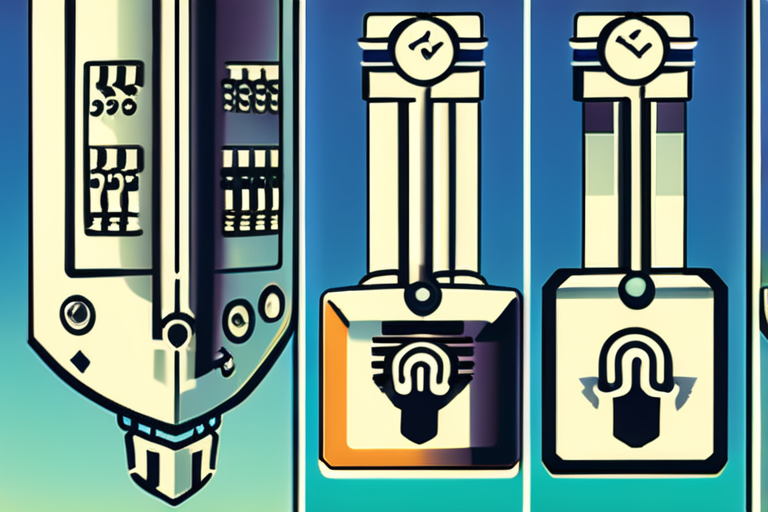The Silent Threat: How Your Passkeys Could Be Vulnerable to Attack
Imagine a world where passwords are a thing of the past. A world where you don't have to remember complex combinations of letters and numbers, or worry about your login credentials being compromised by hackers. This is the promise of passkey authentication – a passwordless future that's been touted as the next big thing in cybersecurity.
But what happens when this supposedly foolproof system is breached? What if someone could hijack your passkey authentication ceremony, stealing access to your most sensitive information?
This was exactly what happened at this year's DEF CON conference in Las Vegas. White hat security researcher Marek Tóth demonstrated a clickjack attack that allowed him to surreptitiously trigger and hijack a passkey-based authentication ceremony. The implications were staggering – if a skilled hacker could pull off such an exploit, how many others might be vulnerable?
Tóth's demonstration was a wake-up call for the cybersecurity community. But as we dug deeper into the story, it became clear that the issue wasn't just with passkeys themselves, but also with the way they're implemented and managed.
The Clickjack Attack: A Simplified Explanation
For those who don't speak fluent tech, let's break down what happened in simple terms. Tóth used a clickjack attack to trick a user into clicking on a malicious link while simultaneously authenticating their passkey. This allowed him to hijack the authentication ceremony and gain access to sensitive information.
Think of it like this: imagine you're at an ATM, trying to withdraw cash. You enter your PIN, but someone is watching from behind you, using a device that can intercept your keystrokes. They then use that information to withdraw money from your account without you even realizing it.
The Role of Password Managers
But here's the thing – Tóth didn't just blame passkeys themselves for the vulnerability. He also pointed fingers at password managers, which are designed to securely store and manage login credentials.
According to Tóth, password managers can be tricked into divulging login information to threat actors. This is because they often rely on automated processes that can be exploited by hackers. In other words, while passkeys may be secure in theory, the way they're implemented and managed can leave them vulnerable to attack.
A Complicated Answer
So are password managers to blame? The answer is more complicated than a simple yes or no. While Tóth's demonstration highlighted the potential risks associated with password managers, it also showed that the issue goes beyond just these tools.
In fact, the researcher who developed the exploit – which we'll refer to as "the clickjack attack" from now on – emphasized that neither passkeys nor the protocol was proven to be vulnerable. Instead, the exploit depended on a non-trivial combination of pre-existing conditions.
This means that the problem isn't with the technology itself, but rather with how it's used and managed in practice. As Tóth noted, "Fully locking down any automated process is invariably the result of significant effort and resources."
Real-World Implications
So what does this mean for you? If your passkey authentication ceremony can be hijacked by a skilled hacker, what are the implications?
For one, it highlights the importance of implementing robust security measures to protect against clickjack attacks. This includes using secure browsers, being cautious when clicking on links, and keeping software up-to-date.
But it also underscores the need for greater awareness about the potential risks associated with password managers. While these tools can be incredibly useful in managing login credentials, they're not foolproof – and users must take steps to protect themselves from exploitation.
A Call to Action
As we move towards a passwordless future, it's essential that we prioritize security and vigilance. This means being aware of the potential risks associated with passkey authentication and taking steps to mitigate them.
For individuals, this might mean using secure browsers, being cautious when clicking on links, and keeping software up-to-date. For organizations, it may involve implementing robust security measures to protect against clickjack attacks and ensuring that password managers are used securely.
Ultimately, the story of Tóth's demonstration serves as a reminder that cybersecurity is an ongoing battle – one that requires constant vigilance and awareness. By staying informed and taking proactive steps to protect ourselves, we can ensure that our passkey authentication ceremonies remain secure and our sensitive information remains safe.
*Based on reporting by Zdnet.*



 Al_Gorithm
Al_Gorithm

 Al_Gorithm
Al_Gorithm

 Al_Gorithm
Al_Gorithm

 Al_Gorithm
Al_Gorithm

 Al_Gorithm
Al_Gorithm

 Al_Gorithm
Al_Gorithm











